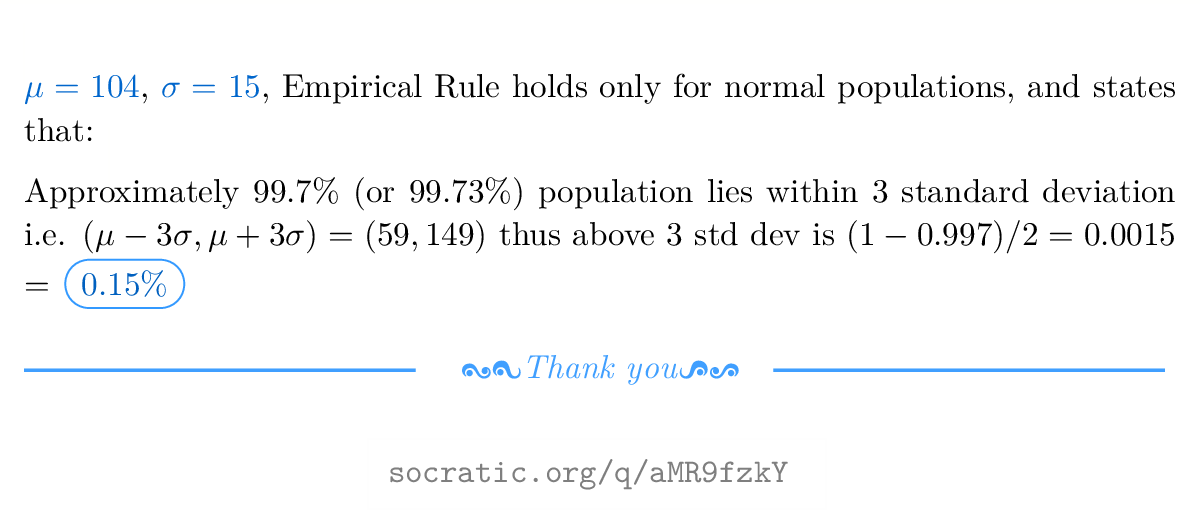Suppose that IQ scores have a bell-shaped distribution with a mean of 104 and a standard deviation of 15. Using the empirical rule, what percentage of IQ scores are at least 59? Please do not round your answer.
Thanks all in advance
Thanks all in advance
2 Answers
0.15%
Explanation:

From the comment section
"Suppose that IQ scores have a bell-shaped distribution with a mean of 101 and a standard deviation of 12. Using the empirical rule, what percentage of IQ scores are at least 125? Please do not round your answer."
We know that the empirical Rule applies to a normal, bell-shaped curve and states that within one standard deviation of the mean there is
Mean
SD
Given condition: score must be at least
#125=101+nsigma# ,#(n=1,2,3)#
#=>n=(125-101)/12=24/12=2#
Thus,
We see from empirical rule that
Hence, for population to be above
#(1-0.95)/2=0.025#
#=>2.5%#

